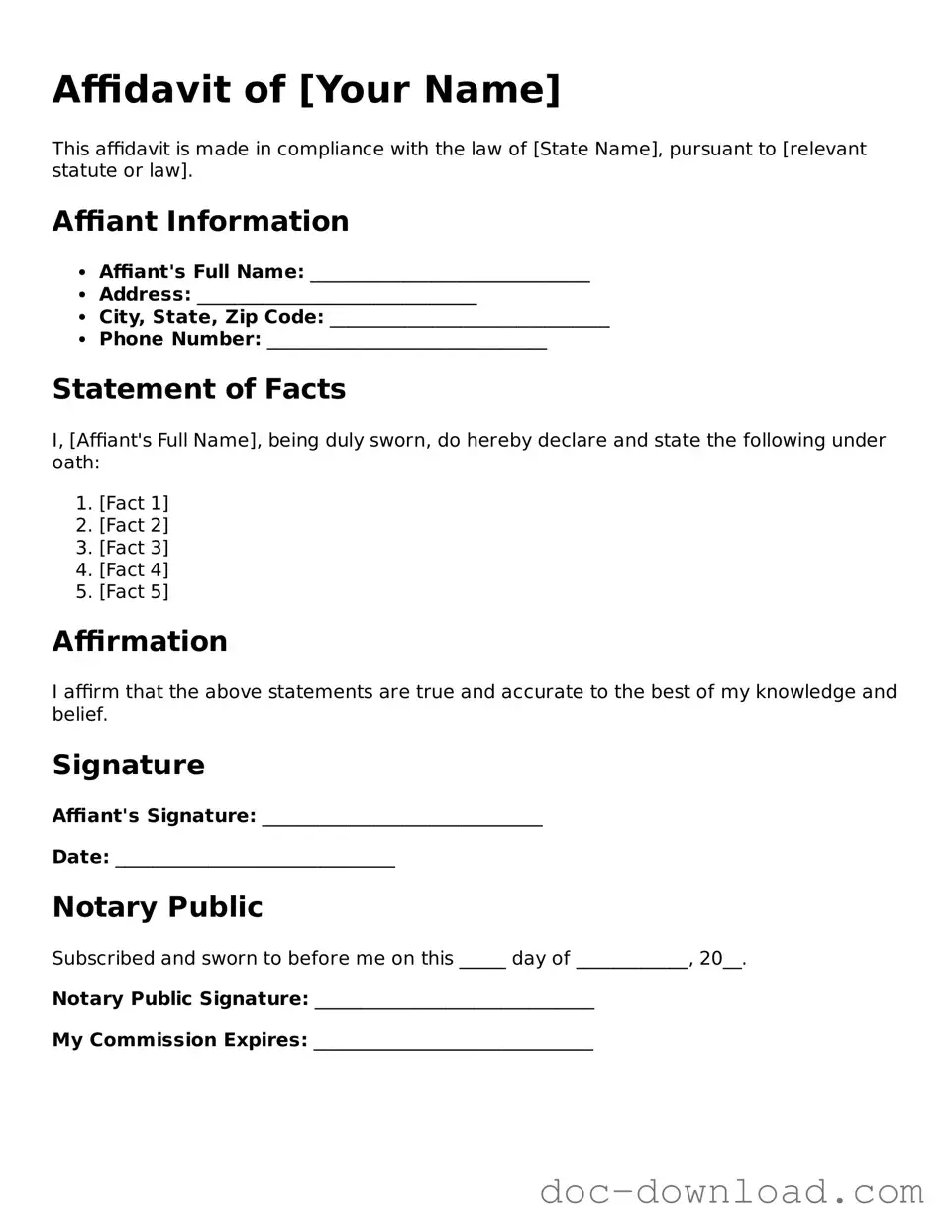An affidavit is a written statement made under oath, often used in legal proceedings. One document that shares similarities with an affidavit is a declaration. Like an affidavit, a declaration is a formal statement made by an individual. However, declarations do not require the same level of formality as affidavits; they do not need to be notarized or sworn before a notary public. Both documents serve to present facts and can be used in court, but affidavits carry more weight due to their sworn nature.
Another document akin to an affidavit is a deposition. A deposition is a process where a witness provides sworn testimony outside of court, typically during the discovery phase of a legal case. Both affidavits and depositions involve the presentation of evidence and facts, but depositions allow for questioning by attorneys, making them more interactive. Affidavits, on the other hand, are static documents that present a single person's account without the opportunity for cross-examination.
Affidavits are also similar to sworn statements, which are declarations made under oath. Sworn statements can be used in various legal contexts, just like affidavits. The key difference lies in the terminology and the context in which they are used. While both documents are intended to provide truthful accounts, sworn statements may not always be as formalized as affidavits and can sometimes be used in informal settings.
Power of attorney documents share some characteristics with affidavits as well. A power of attorney allows one person to act on behalf of another in legal matters. While an affidavit is a personal statement, a power of attorney is a legal instrument that grants authority. Both documents require signatures and can be used in legal proceedings, but their purposes differ significantly. An affidavit is about providing evidence, while a power of attorney is about delegation of authority.
Another related document is a will. A will outlines how a person's assets should be distributed after their death. While an affidavit is typically used during a legal proceeding, a will is a directive for future action. Both documents require careful drafting and must be executed according to specific legal standards. However, a will often needs to be witnessed, whereas an affidavit is sworn before a notary.
A Quitclaim Deed serves as a crucial legal tool in property transactions, particularly in Illinois, where it facilitates the transfer of property ownership without warranties. This document is particularly useful in family transfers or when resolving title issues. For those looking to prepare a Quitclaim Deed, you can find the necessary template at quitclaimdeedtemplate.com/illinois-quitclaim-deed-template/.
In some cases, a certificate can resemble an affidavit. Certificates, such as birth or marriage certificates, serve as official documents that verify certain facts. Although they do not require a sworn statement from an individual, they carry legal significance and can be used in court. Affidavits and certificates both aim to establish authenticity and fact, but certificates are typically issued by an authority rather than created by the individual.
Lastly, a memorandum can be compared to an affidavit. A memorandum is a written record of information or a summary of facts. It may be used in legal contexts to communicate information but does not require the same formalities as an affidavit. While both documents can provide important information, memoranda do not have the same legal standing as affidavits, which are sworn and carry more weight in legal matters.
